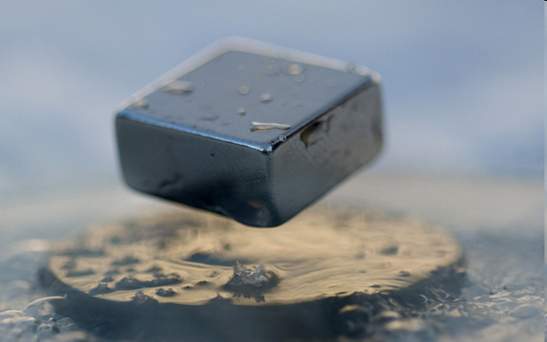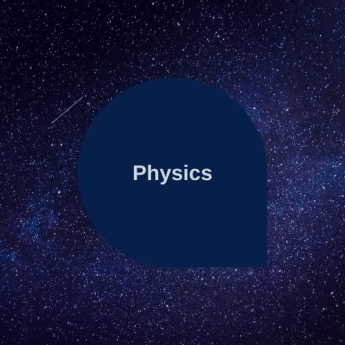
Physics
Our research activities are conducted in our research units or on large instruments and infrastructures installed in France and worldwide (synchrotron and neutron light sources, laser and XFEL installations and platforms, etc.).
Our research teams involve about 1200 permanent members including lecturers, researchers and technical and administrative staff. Our research falls within the following areas:
-
Statistical & quantum mechanics and quantum information: activities include theoretical and statistical mechanics, classical or quantum systems, in or out of equilibrium, with numerous applications in mathematics, computer science, data science, cognitive science and biology.
-
Astrophysics and astro-particles: activities include the study of the distant universe and its origins. Research units rely on experimental techniques for the detection of high-energy particles or gravitational waves, contribute to the development of techniques for data processing, astrometry and metrology of the highest level and have expertise in laboratory astrophysics for the interpretation of astrophysical observations. Our research units play a leading role in the study of natural or laboratory plasmas that are investigated from the smallest to the largest scale and have applications in a variety of fields ranging from medical to energy applications.
-
Physics of elementary particles and fundamental interactions: our research teams study the ultimate components of matter and subtle asymmetries between matter and antimatter. On the experimental level, they have acquired advanced skills in the fields of silicon sensors, CCDs, photometry, Big Data analysis and AI applications. On the theoretical level, they study interactions between the elementary constituents of matter, explore new directions towards solving several major problems in our understanding of infinitely small structures or the microworld, and confront the open question of reconciling quantum mechanics with gravity.
- Atomic, molecular, optical and plasma physics: our research teams address fundamental questions of light-matter interaction, quantum states of light and precision spectroscopy. They have made significant contributions to quantum optics, quantum information and opto-mechanics. Advances in cooling and trapping neutral atoms have given rise to fundamental problems in condensed matter. Our research teams continue the long and strong tradition developed in the instrumentation and remote sensing of molecules in the Universe and in the study of the dynamics of interstellar environments, stellar plasma and magnetohydrodynamic turbulence.
- Physics of condensed matter and materials: our teams have developed a strong tradition in the use and development of digital calculation codes for the prediction and simulation of the properties of matter. They also combine extensive experimental and theoretical expertise in the study of crystalline and disordered states at all spatial and temporal scales. This makes it possible to unveil and control the macroscopic and quantum properties at the heart of fundamental research, with a focus on applications. Particularly noteworthy is expertise in the fabrication of massive materials or in the form of thin films and nanostructures using several techniques, and in their characterisation, including a full range of spectroscopy and microscopy techniques, local probes, measurements at low temperature and under extreme conditions, and fast ion sources.
-
Fluid mechanics, soft matter, biophysics, climatology: our research teams study fluids at all scales from molecules to galaxies, solid mechanics, granular media and instabilities in dynamical systems. At the interfaces between physics & biology and physics & medicine, they study biological systems, from the molecular level to integrated systems, under controlled conditions to reduce and control the complexity of living organisms, or under natural conditions.

Research Units | Physics |
|
| Institut d'astrophysique de Paris IAP |
Laboratoire de physique et d’étude des matériaux LPEM |
| Institut de minéralogie, de physique des matériaux et de cosmochimie IMPMC |
Laboratoire de physique de l’École Normale Supérieure |
| Institut de mécanique céleste et de calcul des éphémérides IMCCE |
Laboratoire de physique nucléaire et de hautes énergies LPNHE |
| Institut des nanosciences de Paris INSP |
Laboratoire de physique des plasmas LPP |
| Laboratoire atmosphères et observations spatiales LATMOS |
Laboratoire de physique théorique et hautes énergies LPTHE |
| Laboratoire de chimie physique-matière et rayonnement LCP-MR |
Laboratoire de physique théorique de la matière condensée LPTMC |
| Laboratoire d'études spatiales et d'instrumentation en astrophysique LESIA |
Laboratoire pour l'utilisation des lasers intenses LULI |
| Laboratoire Jean Perrin LJP |
Physique et mécanique des milieux hétérogènes PMMH |
| Laboratoire d'études du rayonnement et de la matière en astrophysique et atmosphères LERMA |
Systèmes de référence temps-espace SYRTE |
| Laboratoire Kastler Brossel LKB |
MajuLab |
Research Federations & Institutes Supporting the Activities of Our Research Units
- Fédération de recherche Interactions fondamentales (FRIF)
- Institut Henri Poincaré (IHP)
- Institut parisien de chimie physique et théorique (IP2CT)
- Paris Center for Quantum Computing (PCQC)
- Plasmas à Paris (PLAS@PAR)
